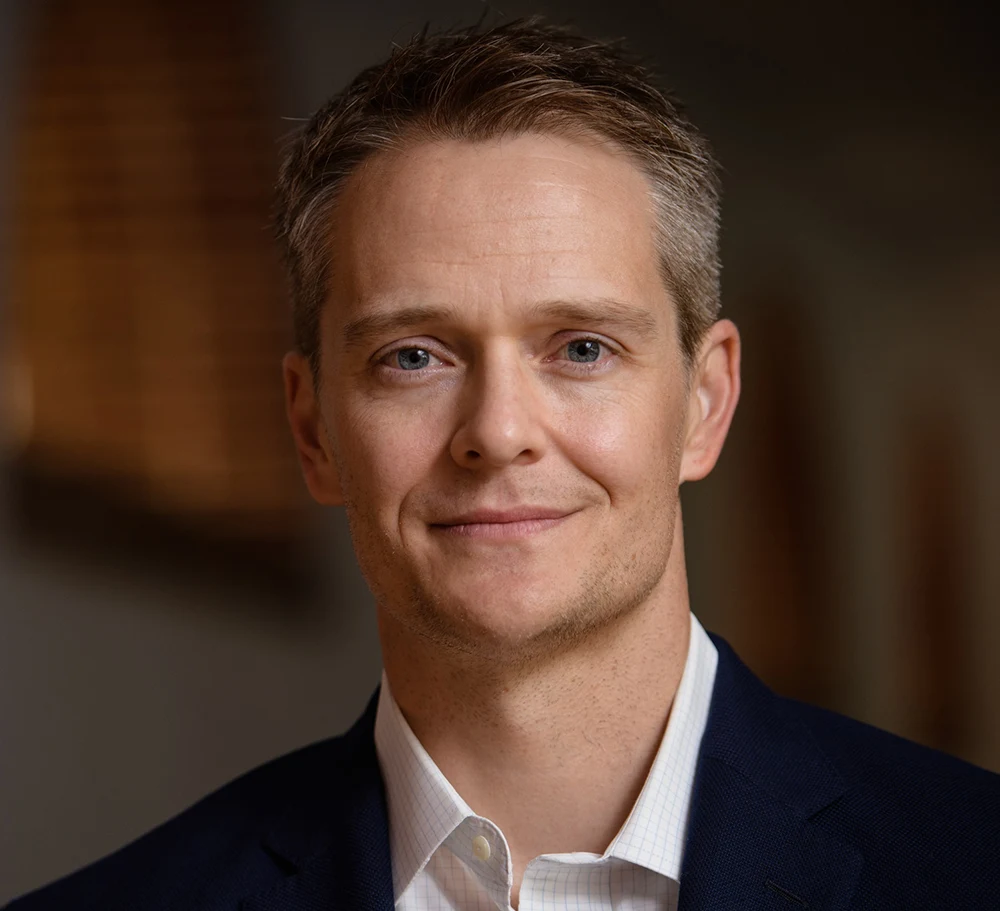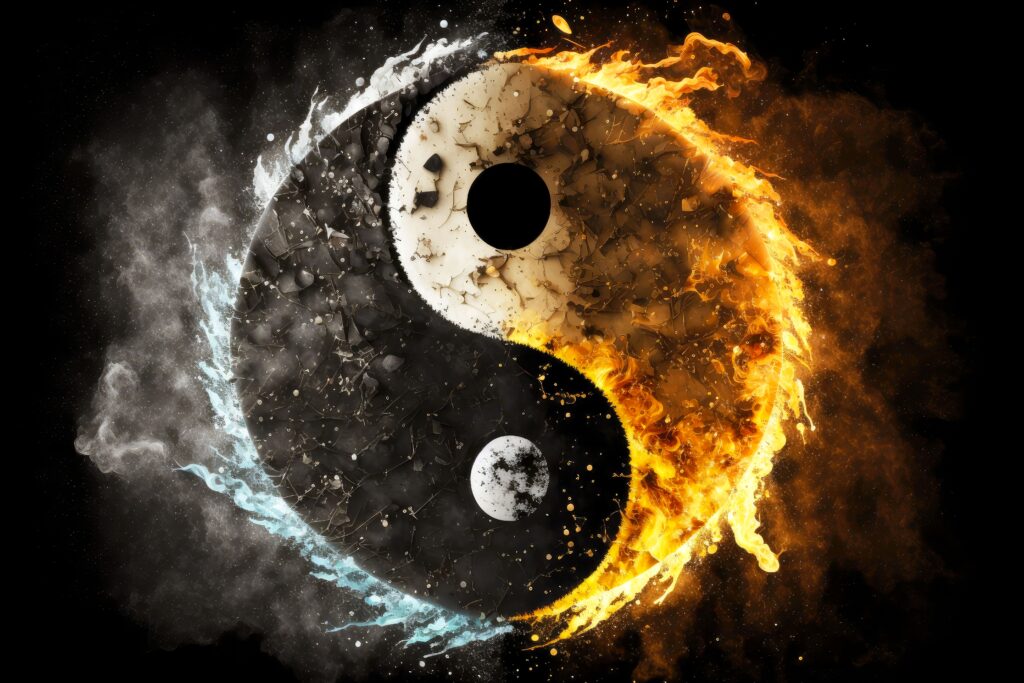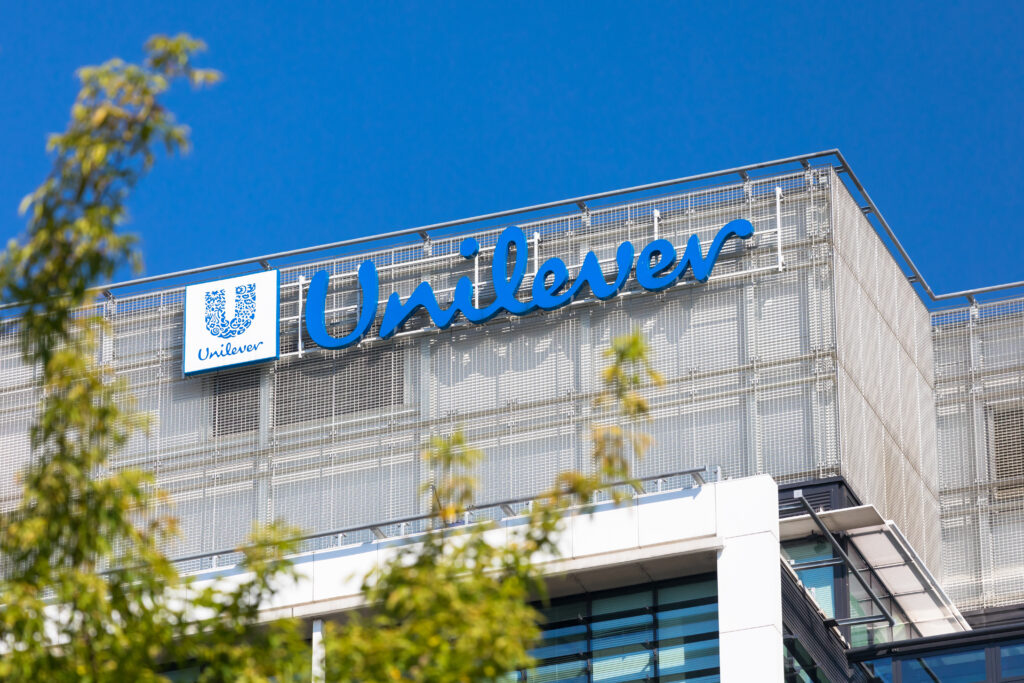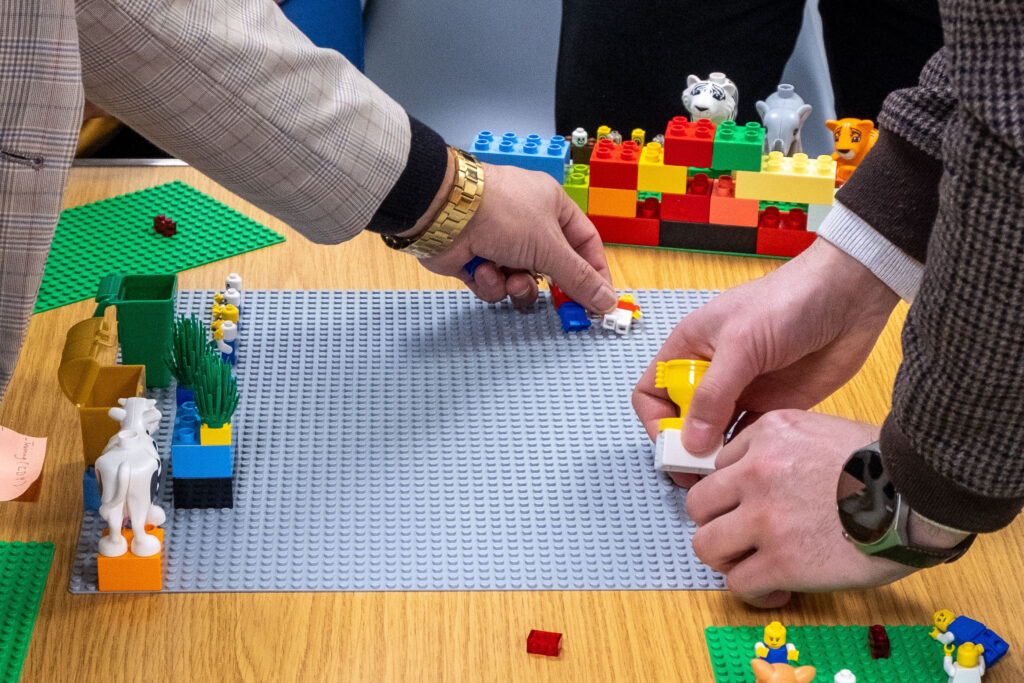Up next....
Ask Ethical Questions as the Lines Blur Between AI and Media
By Daniel Butcher
As generative AI’s usage continues to grow rapidly, critics point out that OpenAI’s ChatGPT fabricates sources, including citations, journal names, and articles, that sound legitimate and scholarly, but are often made up. Sometimes, it doesn’t attribute direct quotes to the person who said or wrote them. Other generative AI platforms have been accused of plagiarism or failing to properly cite sources or even producing “hallucinations” that fill information gaps with inaccurate statements or outputs. Still, these may be more growing pains rather than chronic illnesses.
That’s according to Academy of Management Scholar Herman Aguinis of the George Washington University School of Business, who said that every new technology presents ethical challenges in producing and using it. Problems arose in the early days of the Internet, too. He noted that generative AI platforms such as ChatGPT have largely corrected the issue of hallucinations.
“You can Google something and copy and paste something from the search results, but plagiarism has been around for a long time…you could grab a paper book from the library and copy a whole paragraph from it,” Aguinis said. “AI is making these possibilities and the potential for cheating in these ways much easier and more straightforward.
“ChatGPT 3.0 was doing that, but the GPT-4o version not only gives you the right source name but also a quote or sentence from the source—it is absolutely incredible, and that’s going to get even better,” he said.
As for using generative AI in the workplace, Aguinis believes that leaders have to create sensible policies.
“One sensible general blanket policy that applies across industries, jobs, and tasks is to openly and honestly describe exactly how you use AI for your specific task, essentially, user beware,” Aguinis said. “It’s really important to offer an explanation, qualification, or warning of how you used AI.
“Second, the issue of AI output verification is absolutely key—you should verify the accuracy and appropriateness of the information that you received through ChatGPT,” he said. “Those are the guardrails, and while this is evolving, and we’re immersed in it, people shouldn’t be too scared about it, because every time we lived through those technological advancements, there were all these alarms going off that there’s going to be all kinds of problems.
“Every technology can be used, abused, and misused, so there’s nothing new about AI—we need to think about verifying the information and being open and honest about how we use it.”
-
Daniel Butcher is a writer and the Managing Editor of AOM Today at the Academy of Management (AOM). Previously, he was a writer and the Finance Editor for Strategic Finance magazine and Management Accounting Quarterly, a scholarly journal, at the Institute of Management Accountants (IMA). Prior to that, he worked as a writer/editor at The Financial Times, including daily FT sister publications Ignites and FundFire, Crain Communications’s InvestmentNews and Crain’s Wealth, eFinancialCareers, and Arizent’s Financial Planning, Re:Invent|Wealth, On Wall Street, Bank Investment Consultant, and Money Management Executive. He earned his bachelor’s degree from the University of Colorado Boulder and his master’s degree from New York University. You can reach him at dbutcher@aom.org or via LinkedIn.
View all posts
Up next....
Shifting from Either/Or to Both/And Thinking Benefits Leaders
By Daniel Butcher
“The test of a first-rate intelligence is the ability to hold two opposed ideas in mind at the same time and still retain the ability to function,” American writer F. Scott Fitzgerald wrote. That quote crystallizes related wisdom from Eastern schools of thought such as Taoism and Western philosophers, including Zeno of Elea and Søren Kierkegaard, who explored the implications of shifting from binary black-or-white either/or categorization and decision-making to both/and thinking, also known as a paradox mindset.
Academy of Management Scholar Wendy Smith of the University of Delaware said that understanding the concept of paradox and applying it to creative thinking and decision making are key competencies for effective leadership.
“We face tensions every day in society and our personal and professional lives, making decisions, serving in a leadership role, and spurring innovation,” Smith notes. “Paradox theory invites us to reframe the tensions from problems to opportunities.
“Philosophers have been highlighting the paradoxical nature of our world for over 2,500 years,” she said. “Yet we are only now returning to these ideas to help inform our key tensions in life.”
For years, leaders and academics have sought clear, logical, either/or choices. This analytical approach has advanced scientific discoveries but limited our understanding of complexity.
“Over the last 200 years or so, as our world and challenges become more complex, science is turning to understand paradox,” Smith said. “For example, quantum physics is all about paradox, and it’s hard to get your head around, but essentially, a particle is both there and not there at the same time, and photons are both a wave and a particle at the same time.
“Psychoanalysts argue that the human psyche depends on holding opposing pressures, both being expansive and restrictive, focusing on both the self and the other, engaging the id and the ego,” she said. “Scholars studying leadership and organizations, and all the research that we publish in the Academy of Management journals—we are late to the paradox party.”
Smith believes that it’s now time for us to embrace the paradoxical nature of organizations and leadership. She noted that the Association to Advance Collegiate Schools of Business (AACSB) recently released a new set of competencies that professors need to teach their students, who include future business leaders. AACSB states: Leaders who exhibit a paradox mindset accept that there are multiple ways of knowing and being and welcome such contradictions in their decision-making. In the context of business, paradox requires leaders to refrain from instinctually resolving contradictions, as doing so can eliminate critical differences in thought.
“Leaders are facing more complex challenges,” Smith said. “Both/and thinking offers the opportunity to effectively navigate these issues.”
-
Daniel Butcher is a writer and the Managing Editor of AOM Today at the Academy of Management (AOM). Previously, he was a writer and the Finance Editor for Strategic Finance magazine and Management Accounting Quarterly, a scholarly journal, at the Institute of Management Accountants (IMA). Prior to that, he worked as a writer/editor at The Financial Times, including daily FT sister publications Ignites and FundFire, Crain Communications’s InvestmentNews and Crain’s Wealth, eFinancialCareers, and Arizent’s Financial Planning, Re:Invent|Wealth, On Wall Street, Bank Investment Consultant, and Money Management Executive. He earned his bachelor’s degree from the University of Colorado Boulder and his master’s degree from New York University. You can reach him at dbutcher@aom.org or via LinkedIn.
View all posts
Up next....
Profits and Social Responsibility Can Go Hand in Hand
By Daniel Butcher
Current business leaders aren’t only tasked with maximizing shareholder value; they must balance competing priorities, including setting and meeting environmental, social, and governance objectives. Long-term organizational sustainability requires maintaining profitability while maximizing the organization’s positive social and environmental impact and minimizing negative effects. Navigating these tensions entails overcoming various leadership challenges.
For example, Academy of Management Scholar Wendy Smith of the University of Delaware said that Paul Polman, the former CEO of British-Dutch consumer packaged goods company Unilever, is remembered for establishing the company’s Sustainable Living Plan, which had a set of goals committed to health and well-being, enhanced livelihoods, the environment, social value.
“Polman pulled Unilever out of a death spiral and set it on the path of being the top packaged goods company,” Smith said. “Importantly, he doubled profits and ensured success not in spite of, but rather because of a commitment to addressing environmental and societal demands.
“In an interview we conducted with Polman, he noted that tensions between profits and social missions emerged all the time,” she said.
Unilever’s leadership grappled with questions such as whether to create consumer packaged goods products that were in bigger containers to minimize plastic and waste or smaller containers to increase the margins on each item sold. For Unilever, that question introduced an innovation opportunity: Could they rethink packaging to enable them to sell goods with less environmental impact?
“These kinds of tensions come up all the time,” Smith said. “Effective leadership depends on evaluating these tensions and applying a more holistic both/and approach to come up with more effective solutions.
“Doing so depends on building leadership competencies for both/and thinking, where teams can have difficult conversations that value and engage opposing perspectives and seek new insights,” she said.
-
Daniel Butcher is a writer and the Managing Editor of AOM Today at the Academy of Management (AOM). Previously, he was a writer and the Finance Editor for Strategic Finance magazine and Management Accounting Quarterly, a scholarly journal, at the Institute of Management Accountants (IMA). Prior to that, he worked as a writer/editor at The Financial Times, including daily FT sister publications Ignites and FundFire, Crain Communications’s InvestmentNews and Crain’s Wealth, eFinancialCareers, and Arizent’s Financial Planning, Re:Invent|Wealth, On Wall Street, Bank Investment Consultant, and Money Management Executive. He earned his bachelor’s degree from the University of Colorado Boulder and his master’s degree from New York University. You can reach him at dbutcher@aom.org or via LinkedIn.
View all posts
Up next....
How to Make Hybrid Models Work Well
By Daniel Butcher
Should organizations be flexible and enable work from home or demand that employees come into the office? Post-pandemic, some organizations gave their employees the option to continue working remotely, but most moved to a hybrid model of two or three days per week in the office and two or three days per week working remotely.
That said, more CEOs have decided to mandate that their organization’s personnel come into the office five days a week again, especially in industries such as financial services and technology, with Amazon, X, AT&T, Boeing, Dell Technologies, Goldman Sachs, Morgan Stanley, Citigroup, and J.P. Morgan Chase being the latest Fortune 500 companies to do so. However, that may hurt morale and increase turnover, not to mention impede innovation.
Each of the three options has positives and negatives, complicating leaders’ choices.
Academy of Management Scholar Wendy Smith of the University of Delaware said that leaders need a different way to think about this issue. She noted that most organizations are trying to split the time—some time at home and some time in an office. Yet that approach occasionally ends up with the worst of both worlds.
“Key tensions between autonomy and collaboration, independence and interdependence, well-being and productivity underlie this decision,” Smith said.
Rather than frame these tensions as an either/or, Smith argued that effective leaders see these as a both/and. They explore how to create an approach that values the benefits of both at-home and in-office time and understand how they can benefit one another.
For example, rather than split the number of work days into some sort of a hybrid schedule, leaders can strive to create valuable in-office experiences that contribute to a positive, cohesive organizational culture while being willing to be flexible when it makes sense or is necessary.
“If you expect your employees to be in the office, then make sure that they come for a reason—staff meetings, in-person events, networking opportunities,” Smith said. “Moreover, if they are home, give them the skills, technology, and opportunity to truly have autonomy over their time to the best extent possible so that they can navigate when and how they get their work done.
“The main insight from our research is: If you shift from thinking you’ve got to pick one or the other—an either/or approach—and instead you value and hold these competing demands in your mind simultaneously—a paradoxical both/and approach—that’s when you get to a better solution,” she said.
-
Daniel Butcher is a writer and the Managing Editor of AOM Today at the Academy of Management (AOM). Previously, he was a writer and the Finance Editor for Strategic Finance magazine and Management Accounting Quarterly, a scholarly journal, at the Institute of Management Accountants (IMA). Prior to that, he worked as a writer/editor at The Financial Times, including daily FT sister publications Ignites and FundFire, Crain Communications’s InvestmentNews and Crain’s Wealth, eFinancialCareers, and Arizent’s Financial Planning, Re:Invent|Wealth, On Wall Street, Bank Investment Consultant, and Money Management Executive. He earned his bachelor’s degree from the University of Colorado Boulder and his master’s degree from New York University. You can reach him at dbutcher@aom.org or via LinkedIn.
View all posts
Up next....
Leaders’ Paradoxical Mandate of Current Success and Innovation
By Daniel Butcher
Business leaders and managers know disruptive technologies such as AI are going to upend a significant portion of what their company does. But does that mean that they have to throw out much of what they currently do? Many executives struggle to deal with strategic plans for dealing with a future marketplace where AI, machine learning, and related technologies are omnipresent, while simultaneously maintaining their company’s current business model and core competencies.
Academy of Management Scholar Wendy Smith of the University of Delaware said that she’s done research on business leaders who’ve had to grapple with these kinds of tensions and issues balancing the present (the current technology and business model focused on short-term profitability) and the future (innovation and long-term sustainability).
“We teach leaders to face these dilemmas and make really clear choices and move on and be really consistent within their strategy, but that’s not what I found in the most successful leaders,” Smith said. “The leaders who did it well were able to hold both the past, present, and future—yesterday, today, and tomorrow—the short term and the long term, the existing world and the innovation, hold them in their mind simultaneously and commit to both at the same time, and that’s what we refer to as paradox.”
Such issues and tensions related to that paradoxical mandate come up in leaders’ meetings about strategy, innovation, and sustainability. But it also comes up in our personal lives and how we make career decisions.
“There are all these questions that emerge, and we tend to experience them as either/or tradeoffs, but underlying those binaries or paradoxical decision trees are the question of innovation and his relationship between the short term and the long term,” Smith said. “What we mean by paradoxical is that these dual experiences seem conflicting, or they are indeed in conflict with each other creating tension, but they’re also interdependent contradictions that define each other.
“And successful leaders can look at that paradoxical relationship, hold both aspects of it in their minds, and recognize that they have a much more creative, sustainable way of navigating these tensions, and that’s what we call both/and thinking, which is our lay language for explaining how leaders can accommodate the yin and yang, hold both opposing ideas in their mind, and embrace paradoxes.”
-
Daniel Butcher is a writer and the Managing Editor of AOM Today at the Academy of Management (AOM). Previously, he was a writer and the Finance Editor for Strategic Finance magazine and Management Accounting Quarterly, a scholarly journal, at the Institute of Management Accountants (IMA). Prior to that, he worked as a writer/editor at The Financial Times, including daily FT sister publications Ignites and FundFire, Crain Communications’s InvestmentNews and Crain’s Wealth, eFinancialCareers, and Arizent’s Financial Planning, Re:Invent|Wealth, On Wall Street, Bank Investment Consultant, and Money Management Executive. He earned his bachelor’s degree from the University of Colorado Boulder and his master’s degree from New York University. You can reach him at dbutcher@aom.org or via LinkedIn.
View all posts
Up next....
Lego’s Leaders Walk a Tightrope to Current and Future Success
By Daniel Butcher
The Lego Group, an iconic construction toy production company, has had to adapt over the years to remain competitive and successful in a constantly changing landscape. Its leaders’ approaches to change management and strategic planning are instructive for senior executives having to keep everyone on the same page while making adjustments to overcome challenges.
Academy of Management Scholar Wendy Smith said that Lego has been adept at navigating change. However, she studied a period when the company’s middle managers were feeling upended as their mandate seemed to be all over the place.
“The question was, how could Lego’s leaders implement the necessary changes while preventing their people from feeling held at bay and uncomfortable with all these changes? Amid the mess of this change initiative, the managers had to figure out a workable certainty,” Smith said. “They weren’t coming up with a global strategy of what they were going to do for the change from start to finish; rather, they were figuring out what’s the next best step.
“We actually find that similar approaches are effective in managing paradox, which I talk about as tightrope walking or dynamic decision making,” she said. “The big idea here is that when people think about both/and rather than either/or, and when people think about living in paradox and accommodating competing demands, they tend to think that there’s going to be this great solution, this great win-win benefit where everybody’s happy.”
Smith uses the metaphor of the mule to talk about that common expectation, which may not be realistic.
“The mule is the oldest hybrid animal that humans have been breeding for thousands of years; it’s stronger than a horse and smarter and faster than a donkey—if you bring the donkey and the horse together, you’ve got this mule, and it’s an animal that’s better suited to its intended roles even if it’s not as strong as a donkey or as smart and fast as a horse,” Smith said. “Lego’s leaders were doing this micro-oscillation in their decision making; there would be all these moments of issues bubbling up for them, like, ‘How do we allocate our engineers at this moment to the existing products or the innovation? ‘What do we do with our sales team?’ How do we think about structuring our senior leadership team?’
“And sometimes those decisions would lean more toward the value or benefit of the innovation, and sometimes they would lean more toward the benefit of the existing product; they would sort of oscillate between investing in the two—that’s tightrope walking,” she said. “If you’re going to accommodate competing demands, one major strategy is to look to the future, a long-term vision, and leaders are on the tightrope, which means that they’re making tweaks in their decisions over time—multiple micro-decisions, sometimes to one side, and sometimes to the other, but you aren’t overextending to one side so that you fall over.
“At Lego, they would have to be making decisions that sometimes were accommodating the novel new world and sometimes holding stable in the existing world, and they were shifting, and that has become a big idea for leaders in navigating paradox and living in the both/and mindset.”
-
Daniel Butcher is a writer and the Managing Editor of AOM Today at the Academy of Management (AOM). Previously, he was a writer and the Finance Editor for Strategic Finance magazine and Management Accounting Quarterly, a scholarly journal, at the Institute of Management Accountants (IMA). Prior to that, he worked as a writer/editor at The Financial Times, including daily FT sister publications Ignites and FundFire, Crain Communications’s InvestmentNews and Crain’s Wealth, eFinancialCareers, and Arizent’s Financial Planning, Re:Invent|Wealth, On Wall Street, Bank Investment Consultant, and Money Management Executive. He earned his bachelor’s degree from the University of Colorado Boulder and his master’s degree from New York University. You can reach him at dbutcher@aom.org or via LinkedIn.
View all posts
Up next....
Why Business Leaders Need to Attend the “Paradox Party”
By Daniel Butcher
Paradox used to be considered a peripheral subject of academic study best suited to philosophy, literary theory, or religious studies. However, the concept—often illustrated with the yin-and-yang symbol—has gained prominence across disciplines and recognition as a valuable tool for analyzing business management and organizations.
Academy of Management Scholar Wendy Smith said that when she started to work on her Ph.D. dissertation in organizational studies, senior faculty told her to avoid studying paradox because, in their opinion, it wasn’t a legitimate research focus area that would open a path to career advancement in academia.
“People told me, ‘You can’t publish papers on paradox in management journals,’” Smith said.“They suggested that paradox theory was not clear and linear enough for organization studies, and instead belonged in philosophy or theology.
“They also warned me about using the language of paradox with business leaders,” she said. “They would say that ‘business leaders will be put off by this idea.’’”
Yet Smith pointed to a significant change in the last 25 years. The tide has turned.
“We are now seeing this revolution of academics and leaders wanting to understand paradox, as they experience organizations and our society as complex and filled with tensions,” Smith said. “Paradox theory offers an approach to value these competing demands and transform them into creative possibilities.
“We are late to the paradox party, and we have some catching up to do,” she said.
Smith notes the historic roots of paradox theory dating back more than 2,500 years. Disciplines such as physics and psychoanalysis have had a paradoxical revolution over the past 150 years. She points to physicists such as Niels Bohr, Michael Farraday, and Albert Einstein that embedded paradox into their insights into quantum physics. She also highlights the paradoxical nature of psychodynamics in the writings of scholars such as Carl Jung, Alfred Adler, and Søren Kierkegaard.
“Now is the time for scholars and leaders to embrace and navigate the paradoxical nature of organizations and society,” Smith said. “This paradox approach is not just, ‘How do we solve problems of innovation and sustainability?’—it’s ‘How do we really fundamentally rethink business and our approach to learning about organizations and leadership?’”
-
Daniel Butcher is a writer and the Managing Editor of AOM Today at the Academy of Management (AOM). Previously, he was a writer and the Finance Editor for Strategic Finance magazine and Management Accounting Quarterly, a scholarly journal, at the Institute of Management Accountants (IMA). Prior to that, he worked as a writer/editor at The Financial Times, including daily FT sister publications Ignites and FundFire, Crain Communications’s InvestmentNews and Crain’s Wealth, eFinancialCareers, and Arizent’s Financial Planning, Re:Invent|Wealth, On Wall Street, Bank Investment Consultant, and Money Management Executive. He earned his bachelor’s degree from the University of Colorado Boulder and his master’s degree from New York University. You can reach him at dbutcher@aom.org or via LinkedIn.
View all posts
Up next....
How Leaders Can Overcome Roadblocks to Creativity
By Daniel Butcher
Leaders need creativity to innovate, grow, and adapt to fast-paced changes in the business world spurred by rapidly evolving technologies such as AI. As scholars note, however, creativity embeds inherent tensions between introducing something radical and novel while also being useful and practical.
Academy of Management Scholar Wendy Smith of the University of Delaware notes that these tensions are oppositional but also interdependent. Focusing on usefulness can create constraints that inspire more novelty, while ensuring that more radical ideas can foster more divergent thinking that can ultimately result in something that will be more valuable to the organization and its stakeholders.
“Embracing the paradoxes of creativity inherently enables more creativity,” Smith said.
In the 1970s, psychiatrist Albert Rothenberg noted that geniuses such as Albert Einstein, Pablo Picasso, and Virginia Woolf all generated their greatest insights by juxtaposing oppositional ideas. For example, Einstein’s theory of relativity emerged by exploring how an object could be both in motion and at rest at the same time. Rothenberg called this process Janusian thinking after the two-faced Roman God Janus who could look forward and backward at the same time.
“An important part of the creative Janusian process is changing the question,” Smith said. “If we point out that conflict and ask people to create something, they’ll try to maximize either the novelty or the usefulness.
“But if we say, ‘Those things are in conflict with each other, but they also reinforce each other,’ and ask the question, ‘How can you create something that is both novel and useful amid that conflict?’ people will be much more creative in what they develop and create over time by bringing them together,” she said.
“So situationally, just changing the question makes a huge difference in boosting creativity.”
As the business world becomes more complex, Smith noted that an essential leadership competency will depend on embracing the paradoxes of creativity.
“Leaders of tomorrow will need to embrace both novelty and usefulness, coming up with new approaches to respond to our greatest challenges,” she said.
-
Daniel Butcher is a writer and the Managing Editor of AOM Today at the Academy of Management (AOM). Previously, he was a writer and the Finance Editor for Strategic Finance magazine and Management Accounting Quarterly, a scholarly journal, at the Institute of Management Accountants (IMA). Prior to that, he worked as a writer/editor at The Financial Times, including daily FT sister publications Ignites and FundFire, Crain Communications’s InvestmentNews and Crain’s Wealth, eFinancialCareers, and Arizent’s Financial Planning, Re:Invent|Wealth, On Wall Street, Bank Investment Consultant, and Money Management Executive. He earned his bachelor’s degree from the University of Colorado Boulder and his master’s degree from New York University. You can reach him at dbutcher@aom.org or via LinkedIn.
View all posts
Up next....
Leaders Need Both/And Thinking to Navigate Paradoxical Challenges
By Daniel Butcher
Workers and business leaders alike increasingly confront challenging tensions: How to achieve or produce both quality and quantity? How to balance professional and personal lives? How to get stuff done in a timely fashion and be more spontaneous and experimental?
Academy of Management Scholar Wendy Smith of the University of Delaware notes that it’s challenging to come up with a gameplan for how to face such paradoxical tensions. Her research has found that most people, including leaders, typically want to frame these issues as either/or dilemmas that can be solved by choosing one side or the other. Yet she argues that kind of thinking is limited at best and detrimental at worst. Instead, her research findings indicate that adopting a paradox mindset enables more creative and sustainable solutions to complex business and management problems.
“In my research studying innovation, I found that leaders struggled with the tensions between ensuring effective short-term results and enabling long-term innovation,” Smith said.
Many leaders framed the pressure between today and tomorrow as an either/or choice. Some leaders only focused on innovating for the future, while others felt stuck in the present. The most effective leaders were able to do both.
“These leaders understand that long-term organizational success depended on both sustaining success today while also disrupting that success to innovate for tomorrow,” Smith said. “They understood these tensions as paradoxical and thus could find more creative responses to them.”
Innovations offer one type of paradox. In her research, Smith identified four categories of paradoxes confronting leaders, including:
1) innovation paradoxes (today and tomorrow);
2) obligation paradoxes (mission and markets);
3) globalization paradoxes (global and local); and
4) coordination paradoxes (cooperation and competition).
“Our point was not that people have to be really specific about what they named the paradox or how they classify it, but just how pervasive paradox is in our lives,” Smith said.
“What’s fascinating about this research is that, pragmatically, we tend to study it in the context of business leaders and how they manage tensions, and we’re increasingly being called to talk to leaders because they feel that these paradoxes are all over the place,” she said.
“Leaders of the future will need to get comfortable with paradoxes and build competencies to effectively manage them through both/and thinking.”
-
Daniel Butcher is a writer and the Managing Editor of AOM Today at the Academy of Management (AOM). Previously, he was a writer and the Finance Editor for Strategic Finance magazine and Management Accounting Quarterly, a scholarly journal, at the Institute of Management Accountants (IMA). Prior to that, he worked as a writer/editor at The Financial Times, including daily FT sister publications Ignites and FundFire, Crain Communications’s InvestmentNews and Crain’s Wealth, eFinancialCareers, and Arizent’s Financial Planning, Re:Invent|Wealth, On Wall Street, Bank Investment Consultant, and Money Management Executive. He earned his bachelor’s degree from the University of Colorado Boulder and his master’s degree from New York University. You can reach him at dbutcher@aom.org or via LinkedIn.
View all posts
Up next....
Lessons Learned from IBM’s Pivot to Cloud Computing
By Daniel Butcher
Each company that leads its industry vertical is on top of the world—until it isn’t. Charles Darwin’s quote to explain the phenomenon of natural selection applies to the business world: “It is not the strongest of the species that survives, nor the most intelligent, but the one most responsive to change.”
For every Eastman Kodak, which infamously refused to change its film-oriented business plan and thus missed the boat on the digital-camera business and eventually went under, there are companies such as Google, Amazon, Netflix, and IBM that are nimble enough to adapt to the ever-changing competitive landscape and technological paradigm and stay relevant and profitable. Such examples have important lessons for business leaders and managers who must plan for disruptions and opportunities caused by new technologies such as AI.
Academy of Management Scholar Wendy Smith said that innovation requires senior leaders to have uncomfortable conversations questioning the foundation of their companies’ current business models.
After then-competitors such as General Magic (now defunct) and Compaq Computer Corp. (acquired by HP in 2002) formed business plans based on the recently coined term cloud computing in the mid-1990s, IBM executives began exploring the potential of cloud technology to transform business operations via flexible, scalable products, services, and platforms. In the early days, IBM assigned personnel with experience in providing enterprise IT services to specialize in cloud-based solutions.
Those efforts culminated in 2007, when IBM officially launched its cloud computing division. That same year, the company also partnered with Google and six prestigious U.S. universities to launch a server farm to support research projects in need of fast processors to parse gigantic data sets. However, those successes weren’t a fait accompli; they required making tough decisions about conflicting business models and go-to-market strategies that had a chance to backfire.
“They had to innovate, but they also had millions and millions of dollars invested in their existing relationships with their current clients and their current technology,” Smith said. “They knew they needed to innovate, yet to do so while continuing to manage their existing products—to change the tire while still driving down the highway.”
Smith noted that embracing paradoxes with both/and thinking is critical for leadership in our fast-paced world.
“The best leaders are able to hold both the past, present, and the future—yesterday, today, and tomorrow—the short term and the long term, the existing world and the innovation, and hold them in their mind simultaneously and commit to both at the same time, and that’s what we refer to as paradox mindset,” she said.
-
Daniel Butcher is a writer and the Managing Editor of AOM Today at the Academy of Management (AOM). Previously, he was a writer and the Finance Editor for Strategic Finance magazine and Management Accounting Quarterly, a scholarly journal, at the Institute of Management Accountants (IMA). Prior to that, he worked as a writer/editor at The Financial Times, including daily FT sister publications Ignites and FundFire, Crain Communications’s InvestmentNews and Crain’s Wealth, eFinancialCareers, and Arizent’s Financial Planning, Re:Invent|Wealth, On Wall Street, Bank Investment Consultant, and Money Management Executive. He earned his bachelor’s degree from the University of Colorado Boulder and his master’s degree from New York University. You can reach him at dbutcher@aom.org or via LinkedIn.
View all posts













